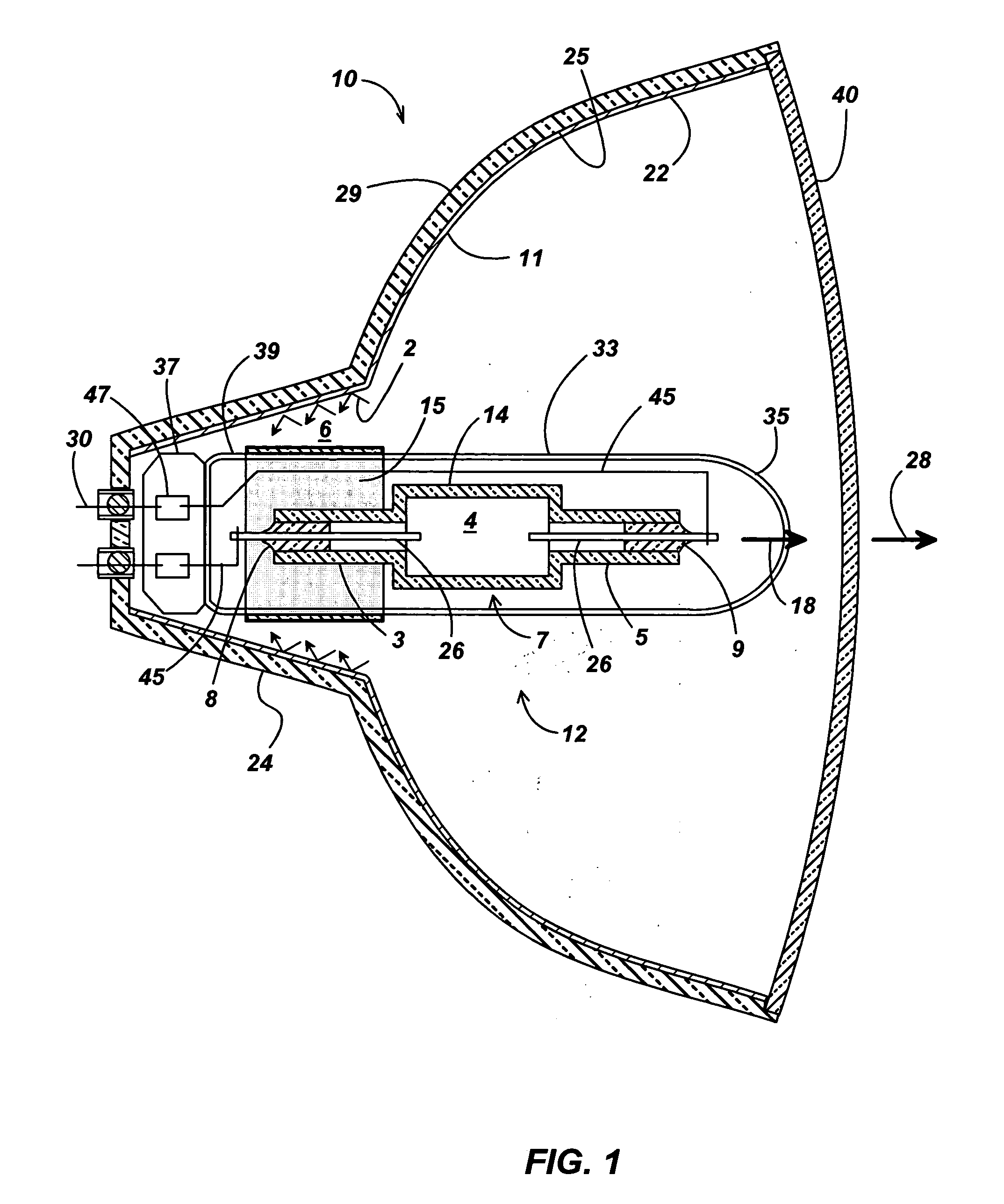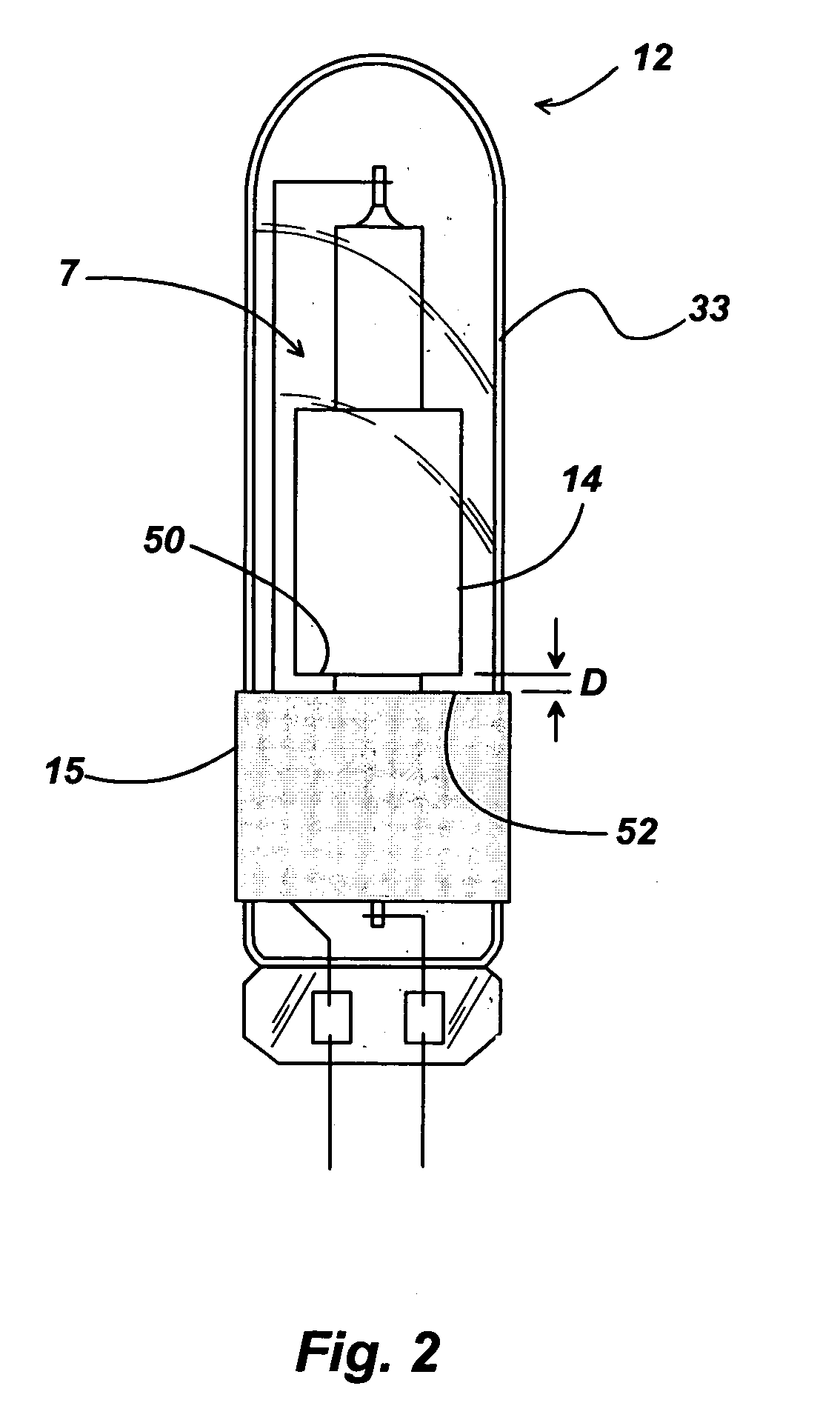Reflector lamp having reduced seal temperature
a technology of reflector lamps and seal temperature, which is applied in the field of light sources, can solve the problems of premature lamp failure, exacerbated problem, and typical failure mode of ceramic metal halide sources
- Summary
- Abstract
- Description
- Claims
- Application Information
AI Technical Summary
Problems solved by technology
Method used
Image
Examples
Embodiment Construction
[0009] For a better understanding of the present invention, together with other and further objects, advantages and capabilities thereof, reference is made to the following disclosure and appended claims taken in conjunction with the above-described drawings.
[0010]FIG. 1 is a cross-sectional view of a preferred embodiment of the reflector lamp of this invention. The reflector lamp is comprised of reflector body 10 and light source 12. A lens 40 may or may not be attached to the forward edge of the reflector to enclose the light source 12 within the reflector body 10. The lens may be fused, glued, or similarly coupled to the reflector body as is known in the art. The reflector body 10 is comprised of concave shell 29 and neck 24 which defines neck cavity 6. The shell 29 surrounds the light source 12 to reflect light from the light source 12 onto a field to be illuminated during lamp operation. The reflector body 10 has a reflective surface 11 to reflect the light emitted from light ...
PUM
 Login to View More
Login to View More Abstract
Description
Claims
Application Information
 Login to View More
Login to View More - R&D
- Intellectual Property
- Life Sciences
- Materials
- Tech Scout
- Unparalleled Data Quality
- Higher Quality Content
- 60% Fewer Hallucinations
Browse by: Latest US Patents, China's latest patents, Technical Efficacy Thesaurus, Application Domain, Technology Topic, Popular Technical Reports.
© 2025 PatSnap. All rights reserved.Legal|Privacy policy|Modern Slavery Act Transparency Statement|Sitemap|About US| Contact US: help@patsnap.com



